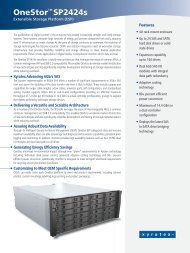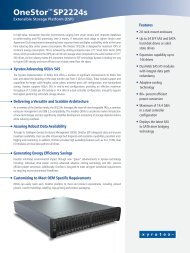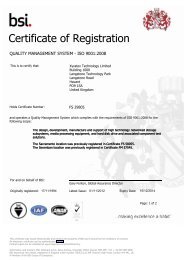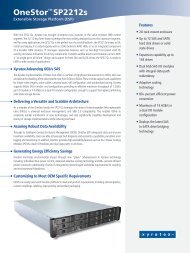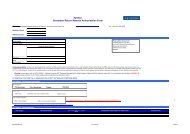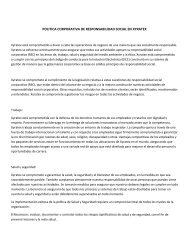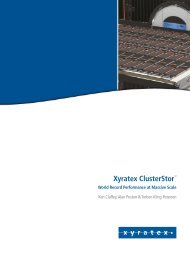Download Annual Report, 2.44 MB - Xyratex
Download Annual Report, 2.44 MB - Xyratex
Download Annual Report, 2.44 MB - Xyratex
- No tags were found...
You also want an ePaper? Increase the reach of your titles
YUMPU automatically turns print PDFs into web optimized ePapers that Google loves.
an average of the quarterly values of the assets during a taxable year) is attributable to assets thatproduce or are held for the production of passive income.We will be treated as owning our proportionate share of the assets and earning our proportionateshare of the income of any other corporation in which we own, directly or indirectly, more than 25%(by value) of the stock.We must make a separate determination each year as to whether we are a PFIC. As a result, ourPFIC status may change. In particular, fluctuation in the market price of our common shares mayresult in us becoming a PFIC.If we are a PFIC for any taxable year, a U.S. Holder will be subject to special tax rules withrespect to any ‘‘excess distribution’’ received and any gain realized from a sale or other disposition ofcommon shares, unless such U.S. Holder makes a ‘‘mark-to-market’’ election as discussed below.Distributions received by a U.S. Holder in a taxable year that are greater than 125% of the averageannual distributions received by such U.S. Holder during the shorter of the three preceding taxableyears such U.S. Holder’s holding period for the common shares will be treated as an excessdistribution. Under these special tax rules (i) the excess distribution or gain will be allocated ratablyover the U.S. Holder’s holding period for the common shares, (ii) the amount allocated to the currenttaxable year, and any taxable year prior to the first taxable year in which we were a PFIC, will betreated as ordinary income, and (iii) the amount allocated to each other year will be subject to tax atthe highest tax rate in effect for that year and the interest charge generally applicable tounderpayments of tax will be imposed on the resulting tax attributable to each such year.The tax liability for amounts allocated to years prior to the year of disposition or ‘‘excessdistribution’’ cannot be offset by any net operating losses for such years, and gains (but not losses)realized on the sale of common shares cannot be treated as capital, even if a U.S. Holder holds thecommon shares as capital assets.If we are a PFIC, a U.S. Holder may avoid taxation under the rules described above by making a‘‘qualified electing fund’’ election to include its share of our income on a current basis, or a ‘‘deemedsale’’ election once we no longer qualify as a PFIC. However, a U.S. Holder may make a qualifiedelecting fund election only if we agree to furnish annually certain tax information, and we do notpresently intend to prepare or provide such information.Alternatively, a U.S. Holder of ‘‘marketable stock’’ in a PFIC may make a mark-to-market electionfor stock of a PFIC to elect out of the tax treatment discussed three paragraphs above. If a U.S.Holder makes a mark-to-market election for the common shares, it will include in income each year anamount equal to the excess, if any, of the fair market value of the common shares as of the close of itstaxable year over its adjusted basis in such common shares. A U.S. Holder is allowed a deduction forthe excess, if any, of the adjusted basis of the common shares over their fair market value as of theclose of the taxable year. However, deductions are allowable only to the extent of any netmark-to-market gains on the common shares included in the U.S. Holder’s income for prior taxableyears. Amounts included in a U.S. Holder’s income under a mark-to-market election, as well as gain onthe actual sale or other disposition of the common shares, are treated as ordinary income. Ordinaryloss treatment also applies to the deductible portion of any mark-to-market loss on the common shares,as well as to any loss realized on the actual sale or disposition of the common shares, to the extent thatthe amount of such loss does not exceed the net mark-to-market gains previously included for suchcommon shares. A U.S. Holder’s basis in the common shares will be adjusted to reflect any suchincome or loss amounts. The tax rules that apply to distributions by corporations which are not PFICswould apply to distributions by us.The mark-to-market election is available only for stock which is regularly traded on a qualifiedexchange or other market, as defined in applicable Treasury regulations. Our common shares are listed79



